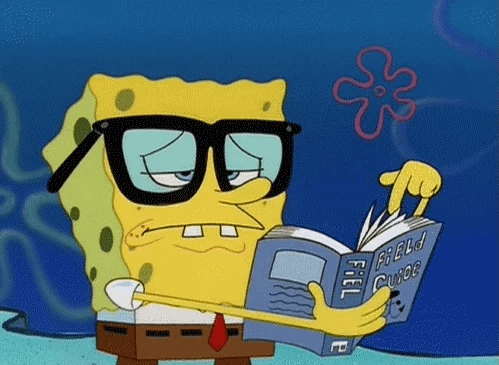Learn Anything Faster & Easier
How to Turn Information into Intelligence
Have you ever wondered how some people can learn new things faster and easier than others? How they can master complex skills or subjects with seemingly little effort? How they can turn information into intelligence and use it to solve problems, create innovations, or achieve their goals?
If you are like most people, you probably think that these people are born with some special talent or gift that makes them smarter or more creative than the rest of us. You might think that they have a higher IQ, a better memory, or a more powerful brain than you do. You might think that learning is a fixed ability that depends on your genes, your environment, or your luck.
But what if I told you that this is not true? What if I told you that learning is not a fixed ability, but a skill that can be improved and developed by anyone? What if I told you that you have the potential to learn anything you want, as long as you know how to use your brain effectively and efficiently?
In this blog post, I will share with you some insights on how to learn better by using the neural chunk theory. Reading this will give you a better idea of how to optimize your learning process and achieve your learning goals.
Focus and Relax: Your Brain's Two Modes
The Focused Brain: Intense Concentration
When your brain is in the focused mode, it’s like a powerful spotlight illuminating the task at hand. You concentrate intensely, directing all your mental energy toward understanding the subject matter. This mode is essential for studying, problem-solving, and engaging in complex tasks that require your undivided attention.
During this state, specific neural networks (will discuss this later in this post), known as task-positive networks, are activated. These networks help you analyze and process information with precision. However, focusing for extended periods can lead to mental fatigue and frustration, limiting your ability to comprehend challenging concepts.
The Relaxed Brain: Background Understanding
Now, imagine your brain transitioning to the relaxed mode, like a calm and steady river flowing in the background. When you take breaks, go for a walk, or do something unrelated to the task at hand, your brain enters this state.
In the relaxed mode, your brain’s default mode network and related neural circuits take the stage. This mode allows for more creative and insightful connections to form, as the brain processes information subconsciously. It’s when the famous “aha!” moments occur—those sudden bursts of understanding and clarity.
By giving your brain a chance to relax and switch modes, you enable it to process information more deeply and connect seemingly unrelated pieces of knowledge. This background understanding enhances your overall learning experience and enables you to approach problems with a fresh perspective.
The "Aha!" Moment: When Ideas Click
You know that sudden flash of understanding when everything seems to fall into place? That’s the “Aha!” moment at work, and it’s more than just a mere coincidence. It’s a result of your brain’s intricate processing and the interplay between the focused and relaxed modes.
Throughout history, countless innovators, scientists, and thinkers have experienced “Aha!” moments that led to groundbreaking discoveries. From Archimedes’ eureka moment in the bathtub to Isaac Newton’s realization about gravity under a falling apple tree, these stories highlight the power of sudden insight.
Fast forward to 2023, “Aha!” moments continue to fuel creativity and problem-solving. Imagine a dev finally understanding the source of a bug, a musician suddenly mastering a challenging chord progression, or an artist discovering the perfect stroke for a masterpiece.
These instances of inspiration are not random occurrences but rather the brain’s extraordinary ability at work.
How Your Brain Processes Information in the Relaxed State
The “Aha!” moment is closely linked to your brain’s relaxed mode. When you’re not actively focusing on a task, your default mode network and related neural circuits step in, processing information in the background.
During this state, your brain forms unexpected connections between seemingly unrelated pieces of knowledge. It’s like the pieces of a puzzle falling into place, revealing a clear picture. This background processing enables you to gain deeper insights and understand complex concepts intuitively.
Taking breaks, going for walks, or engaging in unrelated activities gives your brain the space it needs to process information subconsciously.
When you return to a task after a period of relaxation, you’ll often find that things suddenly make sense. It’s as if the pieces of the puzzle have rearranged themselves, revealing the solution you were searching for. This is the magic of the “Aha!” moment, and it’s a testament to the incredible capabilities of your brain.
Brain Libraries: The Power of Neural Chunks
Think of neural chunks as mental patterns stored in your brain’s library. These chunks represent well-practised routines for specific tasks or concepts. Just like learning to back up a car becomes second nature after practice, neural chunks enable you to effortlessly recall information when needed.
Imagine you’re a math whiz with chunks for multiplication, division, calculus, and more. Each chunk allows you to perform complex math tasks with ease. As you develop a broader library of neural chunks, your expertise in a subject deepens.
Chunking theory, first explored by Nobel Prize winner, Herbert Simon, reveals that expertise grows with a vast collection of well-practised neural patterns. The more chunks you develop through deliberate practice, the smoother your problem-solving abilities become.
Contrary to the belief that excessive practice hampers creativity, research shows that the right kind of practice, with varied techniques and interleaving, fosters creativity and enhances problem-solving skills.
Busting Myths: Smart Practice Makes Perfect
There’s a common myth that excessive practice stifles creativity. However, we want to set the record straight. The right kind of practice, involving varied techniques and interleaving different concepts, actually fuels creativity and problem-solving skills. It’s not about mindless repetition but purposeful and strategic practice.
By understanding the balance between focus and relaxation, you can nurture creativity while still honing your skills. Let go of the notion that practice kills creativity, and embrace the powerful combination of deliberate practice and a creative mindset.
Research has shown that deliberate practice, where you engage in focused and goal-oriented practice, leads to substantial skill improvement. Interleaving techniques, which involve mixing different topics or concepts during practice, promote deeper learning and better retention.
Furthermore, spaced repetition, where you revisit material over time, reinforces memory and knowledge retention. Combining these techniques optimizes your learning process, leading to long-lasting expertise.
Practical Tips to Maximize Focus and Relaxation
Set Clear Goals: Define what you want to achieve and break your learning tasks into manageable chunks. Having clear objectives keeps you focused and motivated.
Manage Distractions: Minimize interruptions during focused study sessions. Create a distraction-free environment, turn off notifications, and designate specific times for breaks.
Practice Mindfulness: Incorporate mindfulness techniques, such as deep breathing or meditation, to improve focus and reduce stress during learning.
Take Regular Breaks: Schedule short, rejuvenating breaks between study sessions. Allow your brain to switch to the relaxed mode and process information subconsciously.
Applying your New Found Superpowers to Real-Life
Imagine having a mental toolkit that effortlessly helps you excel in different subjects. With chunking, you can achieve just that. In math, well-practised neural chunks for multiplication, division, and more make complex calculations a breeze. Similarly, in language learning, chunks for conjugation patterns and vocabulary facilitate smooth conversations.
The power of chunking isn’t limited to academic subjects. Whether it’s mastering a musical instrument, learning a dance routine, or acquiring technical skills, neural chunks play a vital role in enhancing your expertise. By building these mental patterns, you gain a profound advantage in any field you choose to pursue.
As you encounter challenges, your brain draws upon the well-practised patterns to find solutions effortlessly. It’s like having a personalized toolbox of problem-solving techniques at your disposal.
Deliberate practice, interleaving, and spaced repetition are your allies on this transformative journey.
Your brain holds remarkable potential with its Focus Mode and Relax Mode. By leveraging chunking and adopting research-backed techniques, you can optimize learning, unveiling your brain's hidden superpowers for continuous growth as a skilled developer. With these insights, your brilliance knows no bounds, so keep learning, keep growing, and let your potential shine brightly in your journey to success. If you want to learn more about this concept, this YouTube video will be very helpful!






